Fabrics, as you know, are used not only for sewing clothes or shoes, but also in many fields of activity. The question often arises as to which fabrics are best used for what. There are many fabrics that are similar in appearance, but have completely different characteristics and features. In particular, suede and velor.
Definition of suede, velor, nubuck
 The fabric is called suede, produced using fat tanning technology. It is made from elk or deer skin. In addition to the fact that it is soft, thin, and has a velvety surface, it is also very durable.
The fabric is called suede, produced using fat tanning technology. It is made from elk or deer skin. In addition to the fact that it is soft, thin, and has a velvety surface, it is also very durable.
Important! Such products do not deform under the influence of the environment, do not become harder, and do not change properties after washing or any contact with water and detergents.
During the production process, natural raw materials are impregnated with animal or vegetable fats. I often use suede for making shoes, bags, and outerwear. It costs much more than its analogs such as velor or nubuck.
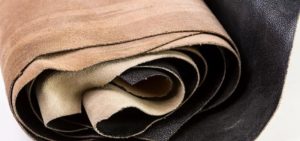 Velours – a natural material made from half-leather, pork or goat skins.It differs from suede in having a thicker pile on one side and absolute smoothness on the other. Velor is not very durable. Products made from it get wet quickly and tend to lose their shape. To avoid this, you have to treat the surfaces with specialized protective agents. Velor is used for sewing shoes, bags, wallets, hats, and outerwear.
Velours – a natural material made from half-leather, pork or goat skins.It differs from suede in having a thicker pile on one side and absolute smoothness on the other. Velor is not very durable. Products made from it get wet quickly and tend to lose their shape. To avoid this, you have to treat the surfaces with specialized protective agents. Velor is used for sewing shoes, bags, wallets, hats, and outerwear.
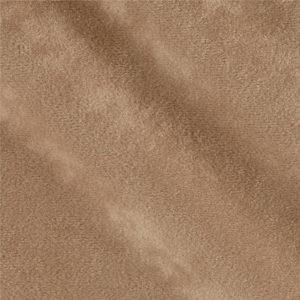 Nubuck called leather obtained after chrome tanning and sanding. Cattle skins are used for the base. Nubuck is smoother than the materials described above and costs less. It is used in the production of shoes, bags, outerwear, even furniture.
Nubuck called leather obtained after chrome tanning and sanding. Cattle skins are used for the base. Nubuck is smoother than the materials described above and costs less. It is used in the production of shoes, bags, outerwear, even furniture.
Comparison of materials
They look very similar, so many people confuse these materials. Their main comparative characteristics are presented in the table:
| Suede | Velours | |
| Velvety | On both sides | On the one hand, but with a thicker pile |
| Moisture resistance | Stable | May become deformed after contact with water, gets wet |
| Can be cleaned with soapy water | Can be cleaned with soap, does not deform, does not change structure | Soap solution is contraindicated; the fabric loses its original appearance and streaks may appear. |
| Price | Expensive due to complex production | Affordable price |
| Color | Color may have several shades | Plain |
| Smell | Has no odors | There is a smell of genuine leather |
| Surface properties | May have scratches and pores. Fingerprints and traces of contact with other objects do not remain | The surface has a solid structure, on which fingerprints constantly remain due to the fact that the pile is quite long and can change direction |
| Hemming of products | They don't bend | Bend in |
Differences in materials in shoes
Some people prefer to buy smooth leather shoes, while others prefer shoes and boots with a velvety texture. It is already clear that the material for such products can be suede, velor, nubuck. Naturally, they differ not only in price, but also in quality.
Important! Externally, all of these materials are similar; not every buyer can immediately determine what the product is made of.
Attention! Fake suede leather is quite common. Sellers especially like to call velor shoes suede. In addition to the fact that suede is much more expensive than velor, it will also serve the owner of the product several times longer.
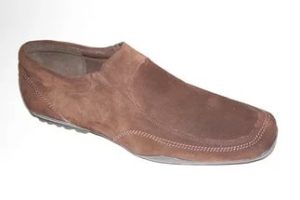 Due to the fact that velor shoes are prone to getting wet, they quickly lose their appearance and often come apart due to moisture. Suede is impregnated with a lot of fats and oils, as a result of which it literally repels any liquids from its surface. In wet weather, real suede shoes will keep you dry, warm, and comfortable.
Due to the fact that velor shoes are prone to getting wet, they quickly lose their appearance and often come apart due to moisture. Suede is impregnated with a lot of fats and oils, as a result of which it literally repels any liquids from its surface. In wet weather, real suede shoes will keep you dry, warm, and comfortable.
How to distinguish velor from suede
To accurately determine which product is made of suede and which is made of velor, you should pay attention to several signs:
Low and shiny pile is a sign of suede, but you should not dwell only on this characteristic.
It cannot be perfectly smooth; there will definitely be natural scratches on it. But at the same time, there will be no marks left on the suede like on velor from the touch of your fingers.
When purchasing, be sure to inspect the cut of the product. Real suede is never folded or its edges are processed.
Suede, unlike velor, has a subtle but very noticeable smell of leather.
What's better?
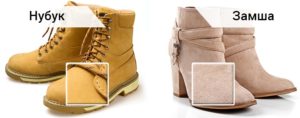 It cannot be said that any of the materials under consideration are worse or better. It all depends on the quality of the fabric, the type of product and its purpose.Therefore, it is worth considering the advantages and disadvantages of suede and velor.
It cannot be said that any of the materials under consideration are worse or better. It all depends on the quality of the fabric, the type of product and its purpose.Therefore, it is worth considering the advantages and disadvantages of suede and velor.
Advantages and disadvantages of suede
Products made from this material have been popular for several seasons. They are comfortable and look stylish. Many consider the high cost of the material to be a disadvantage. But the price, fortunately, justifies the quality. You can select a number of advantages clothes, bags and shoes made from this material:
- exquisite appearance;
- complement any image;
- high quality products;
- shoes made of this material are considered more comfortable, as they quickly take the shape of the foot, but at the same time do not stretch or deform;
- the products do not get wet.
To the disadvantages Difficult care of things can also be attributed. But, on the other hand, any expensive, high-quality product requires an appropriate attitude. So don't be afraid of this.
Important! If you follow the care instructions, the item will delight the owner with its original appearance for a long time.
Advantages and disadvantages of velor
The advantages of velor include the following:
- affordable cost of finished products;
- aesthetic appearance;
- velor shoes and outerwear retains heat well and is suitable for wearing in cold weather;
- the fabric has a smooth, uniform texture and color;
- The material is quite durable and reliable.
But some disadvantages can also be identified. First of all, care is more difficult than suede. It is necessary to constantly treat the products with water-repellent agents, as they are prone to getting wet. And constant getting wet directly leads to deformation and loss of beautiful appearance.
Material care
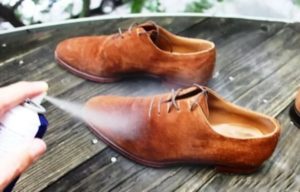 With the differences between suede and velor, everything is now relatively clear, but the main question remains: how to properly care for products with pile.There are several rules that must be followed if you want to preserve things for as long as possible:
With the differences between suede and velor, everything is now relatively clear, but the main question remains: how to properly care for products with pile.There are several rules that must be followed if you want to preserve things for as long as possible:
Before use, the item must be treated with a special impregnation. This must be done in advance, since it begins to act after 4-6 hours. It is needed to ensure that the fabric does not absorb dirt and moisture. It is even recommended to treat the surface three times during the day with an interval of eight hours.
For care you will need special brushes. As analogues, you can use erasers or zero sandpaper.
Before each exit outside, it is recommended to treat the surface with a protective spray.
If the product begins to lose color, then specialized dyes and creams for velvety natural fabrics will come to the rescue.
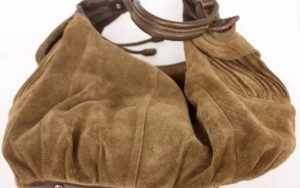 Such things should not be dried near a radiator or in the sun.
Such things should not be dried near a radiator or in the sun.
Products made from natural suede can be washed if desired, washed with soapy water and then wiped with a soft cloth.
When purchasing this or that product and deciding on the material, you should take into account what time of year it will be used and in what weather conditions. For example, spring shoes or a bag can be made of velor, but for boots and warm outerwear, natural suede is better suited.


 0
0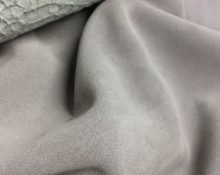

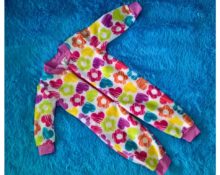
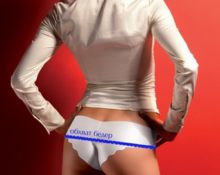

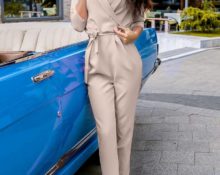

I really love products made from suede material. Thanks for the useful material!
Thank you very much Alina! We'll try our best =)
So why is it difficult to care for suede shoes if they are not afraid of moisture and keep their shape well?
Caring for suede or velor shoes and not only shoes personally causes indignation for me. Because it’s so hard to bring the same shoes into proper shape, but the worst thing is the fact that in a dusty city, shoes made of such fabrics seem irrelevant to me. Since if you go out somewhere on foot, you walk 300-400 meters and spots already appear and are covered with a thin layer of dust, it is best to ride in a car in them, there is no dust and they do not always shine. They really do look extremely beautiful on the foot.
Hello. Can you tell me when choosing suede shoes, if you check whether it is natural suede or not, whether velor burns or not if you check with a lighter.
Igor! Real suede shoes are worn only on carpeted paths. And the servants from your service company are required to take care of your shoes.
The table says that suede has no smell, but below the text it says that suede smells like leather! You will decide on the smells. There are many inaccuracies in the article, for example: velor has a loose and high pile, and suede has a lower and dense pile; nubuck has the shortest piles, so they quickly crush and the material begins to shine. In the photo, which shows shoes made of nubuck and suede, the pile of the suede is shaggy and high, and the edges of the parts are processed, which contradicts what you wrote above about the differences. But to call suede leather fabric is no longer acceptable.There are textile materials called suede and velor, but they have nothing to do with natural or artificial leather.
It’s not clear why the author says that suede is called FABRIC???? What kind of heresy is SUEDE – A MATERIAL, and the fabric is something that is obtained by weaving, or does the author know the place where deer and elk are “woven”????!!!!!
Suede does not grow on deer, leather is the material, and suede is a finished product or fabric that is used for something.